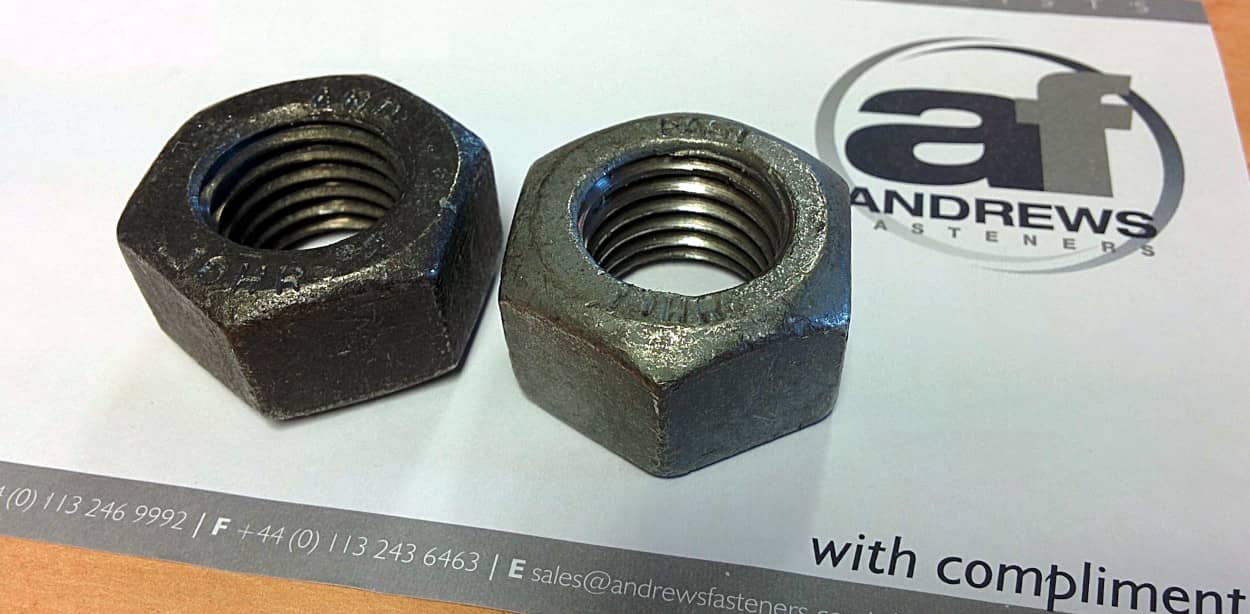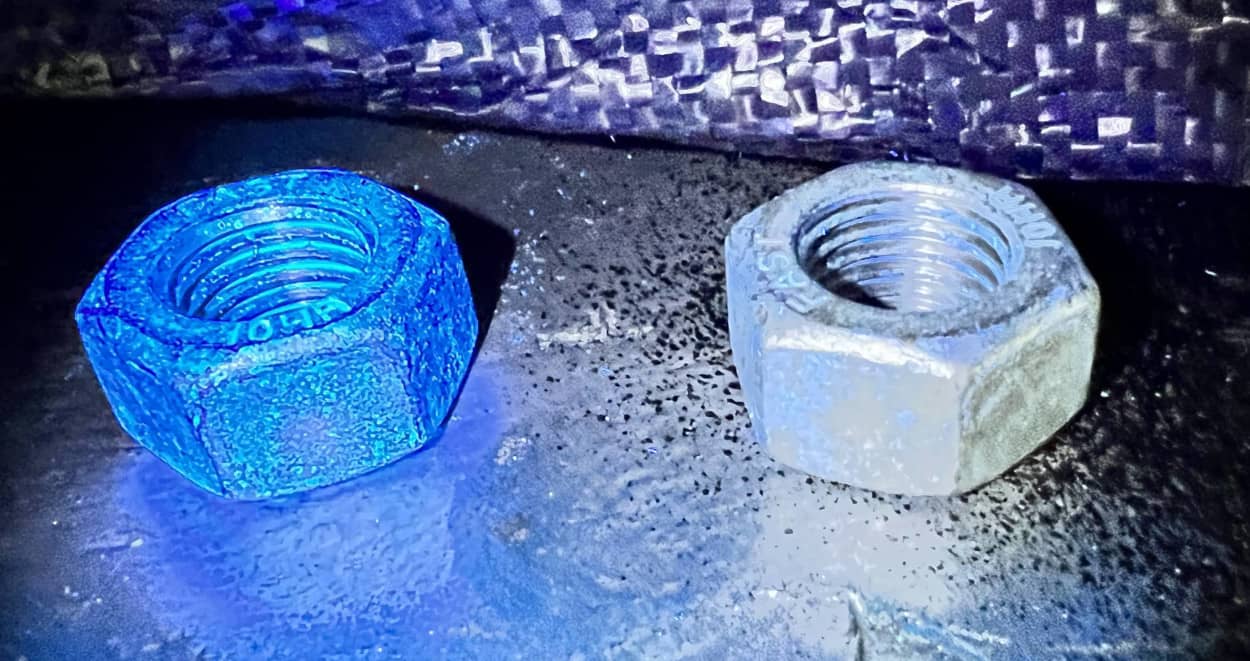It is the requirement that the manufacturer of the EN 14399 assembly will supply them suitably lubricated. The lubrication can be applied either on the bolt thread (external) or the nut thread (internal).
Andrews Fasteners, in a majority of cases, choose to apply lubrication on the internal thread of the nuts.
Due to the method used to lubricate the nuts, typically they need to be immersed in lubricant in full. Depending on the type of process used, the appearance of the nuts can differ, especially on Hot Dip Galvanised (HDG) nuts.
From time to time customers may be confused in regards to galvanised nuts, when they show a dark appearance, that they have been supplied with the wrong finish (self-colour).
Below is an example of different lubrications that can be seen on assemblies supplied from our company.
 no lubricant (bare), sprayed, immersed
no lubricant (bare), sprayed, immersed
The first nut from the left is shown without lubrication (bare). The middle is with applied lubricant by spraying whereas the last one (right) is done by immersive application of the lubricant.
Through immersion, lubrication is applied on the outside, but what is more important is on the inside (internal thread) of the nut.
Some nuts may look exactly like in “bare” condition. Some may be dark.
 dark lubrication vs clean lubrication
dark lubrication vs clean lubrication
The others may show the white haze on the surface and the thread. It is quite easy to identify if the nut has been lubricated when there is a colour difference.
In touch, the nut will feel more slippery than the non-lubricated one. The non-lubricated nuts may also contain a trace of threading oil, where this oil is removed through the cleaning process before lubrication is applied.
When the nut does not show any significant difference in appearance, one of the methods of detection of the lubricant is to use UV (ultraviolet) light.
There is no one UV light available. UV light can be emitted in different wavelengths from 10nm up to 400nm.
Not all lubricants contain UV trackers. If they do, the wavelength for detection strictly depends on the manufacturer’s choice.
Typical UV light with waveform 365um can detect one lubrication, where on another one, it may not be presented in such a prominent manner.
 different lubrication appearance under UV light
different lubrication appearance under UV light
If there are any doubts, has the EN 14399 assembly been supplied pre-lubricated it’s always better to contact the assembly manufacturer. The manufacturer can advise if the lubrication has been applied, and which component has been lubricated.
It is extremely important not to assume, based on appearance, that the supplied assembly hasn’t been lubricated. By this assumption and as a result applied by the user, additional lubrication may have a negative impact on the installation method, especially when the torque installation method is involved.
Andrews Fasteners team can always advise you about EN 14399 assemblies and lubrication if any concerns arise.
↫ Go back